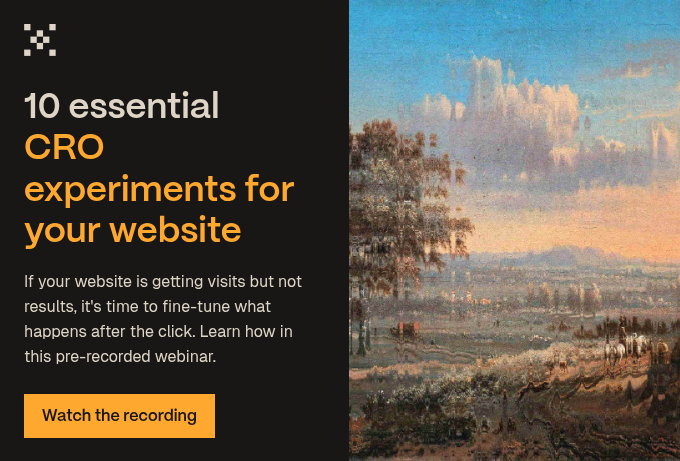Every website project starts with a leap of faith.
It’s your rocket ship and you want all the good things: brilliant design, snappy copywriting, great user experience, more traffic, more leads and greater impact. Perhaps, even a design award or two.
But if you’re building a business website, ultimately it all comes down to the return on your investment (ROI). No bucks, no Buck Rogers.
This article explores different ways to put a value on a new website and how to justify the investment in a high-quality site.
What are the likely costs for a new website?
There are a number of factors to consider on the cost side of the equation:
- Strategy: a broader look at audience personas, user journeys, search engine optimisation, content planning, information architecture, navigation and other structural elements of a new site.
- Design: potentially including brand strategy and logo design. A collaborative, ambitious design process takes time and the more design-forward the site and the more stakeholders you have, the more it will cost.
- Coding: Whether you buy a pre-made theme off the shelf or have your site custom-coded, a website is still a software product, and you’ll need to budget for the development or licensing cost.
- Content creation: including copywriting, localisation, graphic design, photography, videos, animation, infographics and interactive calculators.
- Page building: actually building out the site, page by page has a cost. This is not a big deal on a small brochureware site with, say, 10 pages, but can be significant on sites with hundreds or even thousands of pages.
- Launch control: testing, redirection, DNS changes, updating Google, integrating with HubSpot or other CRM platforms etc.
- Post-launch optimisation: we often include the first few months of post-launch maintenance, tweaks, user observation, conversion rate optimisation, and search engine optimisation in the cost of a new site.
- Project management: including the time spent by people on the agency side and in-house to manage the project as well as time committed by other stakeholders during the process. Using people’s time efficiently and respectfully is one of the less well-known arts of website development.
- Hosting: the cost of a content management system (e.g. HubSpot Content Hub or WordPress), domain registration, security software, content delivery networks etc.
- Ongoing costs: These include maintenance, support, ongoing SEO and CRO, etc.
How much should you invest in your website?
We all know a high-quality website when we see one, and it influences our perception of a brand. Consider Apple.com for example.
Apple’s website must cost millions of dollars a year, and obviously, that budget is not for everyone. Some businesses only need a simple shopfront on the internet, which might cost a few hundred dollars to create.
Ultimately, where you are on that spectrum is up to you but here are a few rules of thumb and observations from more than two decades of building websites:
- Don’t spend less on your website than you did on your branding. We have seen multiple instances of companies that spend a fortune on their logo but penny-pinch on their website. One rule of thumb is to spend roughly equal amounts on branding, website and content, which form the holy trinity of your online presence. (Full disclosure: we offer all three services plus HubSpot consultancy.)
- Plan on recouping your investment over 3-5 years. A website that is easy to update and well-made shouldn’t need to be replaced more frequently. The most likely driver for an overhaul should be major changes to the underlying business, its branding or significant developments in website best practices, such as the recent focus on mobile-friendly sites and Core Web Vitals.
- Generally, B2B companies spend 8-12% of their revenue on marketing overall. Digital marketing will command a variable amount of that budget depending on the company’s go-to-market strategy and marketing approach. Given that your website is the core delivery platform for your digital marketing, we think it makes sense to budget a reasonable fraction of your 3-5-year digital marketing budget to it, treating it as a capital investment that will amortise over the expected life of the site.
At Articulate, website projects fall into three ‘price buckets’.
- Starter. Smaller sites with 10-20 pages for smaller companies tend to fall into our ‘Starter’ category. They use a pre-existing, lightly customised website codebase, adding great copy and page imagery. This kind of site typically costs £10,000-15,000.
- Pro. Our Signature Pro category is for companies with more ambitious design goals, larger sites, and more complex requirements, including the need for things like investor hubs, content libraries, and integrations. These custom-designed and custom-coded sites start at £21,000 and typically cost £30,000-£50,000 once things like strategy, branding, optimisation, and copywriting are included.
- Enterprise. For business-critical sites for larger companies with complex integration and functionality requirements and a very high level of design ambition, these sites tend to have hundreds of pages and require precision project management to ensure a successful launch. At Articulate, these ‘Signature Enterprise’ sites start at £41,500 and typically range in price from £50,000 to more than £140,000 once strategy, branding, integrations, optimisation and copywriting are included.
Lead generation and website ROI
For most B2B companies, lead generation is the most important value of any website. A simple way to think about it is:
Number of website visitors x Site conversion rate = Number of leads
For example, a site with 30,000 visitors a month and a 2% conversion rate will generate 600 leads a month. By contrast, a site with the same traffic but a modest 0.1% conversion rate will only generate 30 leads a month. Same traffic but very different returns.
With appropriate reporting and CRM integration, you should be able to calculate the conversion rate of website leads into MQLs, SQLs, Opportunities and Sales and your average deal value. All this data together gives you a cash value for each website lead and a measurable ROI for inbound leads.
(Side note: if you don’t know your website traffic or conversion rate or if your website leads aren’t going straight into your CRM, let’s talk! We can help! 🙂)
Improved site conversion
A combination of well-designed navigation, information architecture, user journeys, reduced bounce rate, optimised landing pages and calls to action can turn more visitors into leads. For example, HealthHero saw a 2,000% increase in the number of leads when they went from a piecemeal WordPress site to a marketing-optimised HubSpot site.
This effect is most pronounced when the new site is combined with more lead-generation offers and more content designed to attract potential customers, as happened with HealthHero.
Sites with nothing more than a Contact Us page tend to have conversion rates of 0.1%- 0.5%, whereas a very highly optimised site with plenty of high-value middle- and top-of-funnel conversion offers might see 4%+. In our experience, the benchmark for B2B sites is 1-2%. Improving a site’s conversion rate can have a huge impact on its lead generation potential.
In addition, a slow website has a huge impact on user perceptions and conversion rates. According to recent research, 1 in 4 visitors would leave a site that takes more than 4 seconds to load, and each additional second of load time decreases conversion rates by an average of 4.42 per cent (in the first five seconds). (Hat tip Browserstack.)
More visitors
The number of visitors is driven, in part, by factors such as brand awareness, advertising and other marketing activities which are not directly related to your website’s design.
However, the design, experience, coding and content of your website can have a big impact on traffic from search engines, including Google.
If your website scores less than 90% on Google’s Web.dev analyser for SEO or performance, you should see some increase in organic SEO traffic from a new site that is optimised to load quickly and rank well on Google.
This is the result of technical SEO - improving the loading speed, user experience and functional search engine optimisation across the site. For example, HTG saw a 34% increase in traffic after they launched their new site.
In addition, a marketing-optimised site should create an effective platform for ongoing content SEO, for example, by making it easier to publish thought leadership blog articles and integrating keyword optimisation and content planning tools.
Buyer perception and sales support
Is your sales team happy to send website links to prospective customers? Does the website provide a first-class experience to prospective clients when they use it to qualify your business? Does it host the kind of sales collateral and compelling content that demonstrates thought leadership, supports your positioning and helps you defend your margins? Can you get an insight into the progress of a deal based on who is visiting your website and what they are looking at?
Yes? Good. Skip to the next section.
If not, it’s clear that a website has an important role in the sales process even if the prospect was not an inbound website lead.
For example, a new website can help with:
- Clearer positioning, branding and messaging
- Personalised content based on integration with a CRM
- Gated or password-protected sales collateral
- Interactive pricing calculators and other tools that support the sales process
- Sales acceleration with online appointment setting, e-signatures and website-hosted sales proposals
- Identify known visitors and give valuable real-time insights to the sales team
The exact ROI of these benefits is harder to calculate, but that doesn’t mean it’s unimportant. Indeed, for our B2B clients, this is often the most important value driver from a new website.
Efficiency gains, risk reduction and cost savings
A new website can generate a return in several areas. While it’s natural to focus on leads and sales, don’t forget the value of more intangible benefits, such as improved buyer perceptions and the potential for cost savings, including:
- Employee productivity and efficiency gains: When a website is easier to update, marketing teams can spend more time doing marketing and less time faffing around with technology. This is doubly true if your current site can only be updated by an external agency, adding time and cost to the process. Other efficiency gains can come from integrating the website with your CRM and marketing automation to improve lead nurture and sales follow-up. More broadly, integrating the website with other business functions can reduce costs and improve customer satisfaction, for example, by allowing customers to self-serve with common support requests.
- Lower maintenance costs: Unglamorous maintenance work, such as the regular plugin updates required on most WordPress, can add to ongoing costs, whereas platforms like HubSpot that include security, support, and some maintenance functions can cost less in the long run by reducing the need for expensive external providers.
- Risk reduction. A site update can ensure the website is secure and compliant with relevant regulations, such as GDPR, CCPA and other privacy regulations, which can prevent costly breaches and fines. Also, hosting on a modern, reliable platform such as HubSpot, allows the site to grow and adapt to future business needs without significant additional costs.
Pay peanuts and you get monkeys
In the category of ‘he would say that wouldn’t he?’ I’d like to close with a quote from David Ogilvy. What the guru said about advertising is also 100% true about websites.
"Clients who haggle over their agency's compensation are looking through the wrong end of the telescope. Instead of trying to shave a few measly cents off the agency's fifteen per cent, they should concentrate on getting more sales results from the eighty-five per cent they spend on time and space. That is where the leverage is. No manufacturer ever got rich by underpaying his agency. Pay peanuts and you get monkeys." — David Ogilvy
.jpg?width=1600&height=800&name=art-institute-of-chicago-0hltkgJeW24-unsplash%20(1).jpg)


/Medicine.webp?width=400&height=250&name=Medicine.webp)


